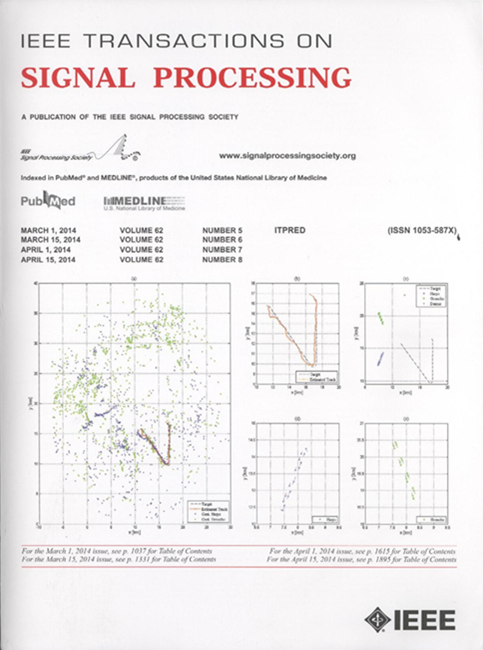ris辅助高分辨率雷达传感
IF 5.8
2区 工程技术
Q1 ENGINEERING, ELECTRICAL & ELECTRONIC
引用次数: 0
摘要
本文分析了用户设备(UE)的单静态传感设置,其中UE由于在单个分辨率bin内的干扰而无法解析多个目标。它显示了传感精度,在检测率和定位精度方面,可以通过可重构智能表面(RIS)来提高,RIS可以有利地用于提供信号分集和帮助解决目标。具体而言,假设存在一组目标的先验信息,RIS波束扫描程序用于促进高分辨率感知。这种设置需要进行量身定制的Fisher分析,并引入两个新的相干概念,这两个概念是推导出的理论界限的核心,即cram本文章由计算机程序翻译,如有差异,请以英文原文为准。
RIS-Assisted High Resolution Radar Sensing
This paper analyzes monostatic sensing by a user equipment (UE) for a setting in which the UE is unable to resolve multiple targets due to their interference within a single resolution bin. It is shown how sensing accuracy, in terms of both detection rate and localization accuracy, can be boosted by a reconfigurable intelligent surface (RIS), which can be advantageously used to provide signal diversity and aid in resolving the targets. Specifically, assuming prior information on the presence of a cluster of targets, a RIS beam sweep procedure is used to facilitate the high resolution sensing. This setting requires a tailored Fisher analysis, as well as introduction of two new coherence concepts that are central to the derived theoretical bounds, namely the Cramér-Rao lower bound and a new upper bound on the detection probability. Next, we propose an orthogonal matching pursuit channel estimation algorithm combined with data association to fuse the information of the non-RIS signal and the RIS signal and perform sensing. Finally, we provide numerical results to verify the potential of RIS for improving sensor resolution, and to demonstrate that the proposed methods can realize this potential for RIS-assisted high resolution sensing.
求助全文
通过发布文献求助,成功后即可免费获取论文全文。
去求助
来源期刊

IEEE Transactions on Signal Processing
工程技术-工程:电子与电气
CiteScore
11.20
自引率
9.30%
发文量
310
审稿时长
3.0 months
期刊介绍:
The IEEE Transactions on Signal Processing covers novel theory, algorithms, performance analyses and applications of techniques for the processing, understanding, learning, retrieval, mining, and extraction of information from signals. The term “signal” includes, among others, audio, video, speech, image, communication, geophysical, sonar, radar, medical and musical signals. Examples of topics of interest include, but are not limited to, information processing and the theory and application of filtering, coding, transmitting, estimating, detecting, analyzing, recognizing, synthesizing, recording, and reproducing signals.
 求助内容:
求助内容: 应助结果提醒方式:
应助结果提醒方式:


